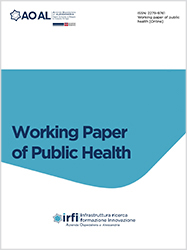Un’indagine sui sintomi prostatici e qualità di vita nella popolazione maschile con patologie concomitanti afferenti all’Azienda Ospedaliera Universitaria di Alessandria
All claims expressed in this article are solely those of the authors and do not necessarily represent those of their affiliated organizations, or those of the publisher, the editors and the reviewers. Any product that may be evaluated in this article or claim that may be made by its manufacturer is not guaranteed or endorsed by the publisher.
Autori
Background: l’iperplasia prostatica benigna è una condizione patologica caratterizzata da un aumento dimensionale della prostata che comporta sintomi delle basse vie urinarie (LUTS, Lower Urinary Tract Syntoms) che interferiscono sulla qualità di vita dei soggetti di sesso maschile. Materiali e Metodi: è stato utilizzato il questionario International Prostatic Symptoms Score (IPSS), su pazienti con un’età maggiore di 30 anni che non abbiano avuto una patologia urologica o prostatica diagnosticata per indagare i sintomi da iperplasia prostatica benigna in pazienti con patologie concomitanti. Risultati: sono stati analizzati 102 questionari IPSS. Il 62.1% dei pazienti presentava una sintomatologia lieve, il 34% presentava una sintomatologia moderata e il 3.9% presentava una sintomatologia grave, in concordanza con un aumento dell’età. Tra i pazienti a cui è stato somministrato il questionario è risultata una percentuale maggiore (67%) di disturbi minzionali della fase di riempimento. Conclusioni: in accordo con la letteratura, il questionario IPSS può essere un modello di screening per identificare e trattare precocemente i sintomi delle basse vie urinarie. Come dimostrato dai nostri risultati i sintomi peggiorano con l’aumentare dell’età, quindi individuarli in una fase precoce può ridurre il rischio di complicanze e anticipare una visita con lo specialista di riferimento.
Come citare

Questo volume è pubblicato con la licenza Creative Commons Attribuzione - Non commerciale 4.0 Internazionale.






